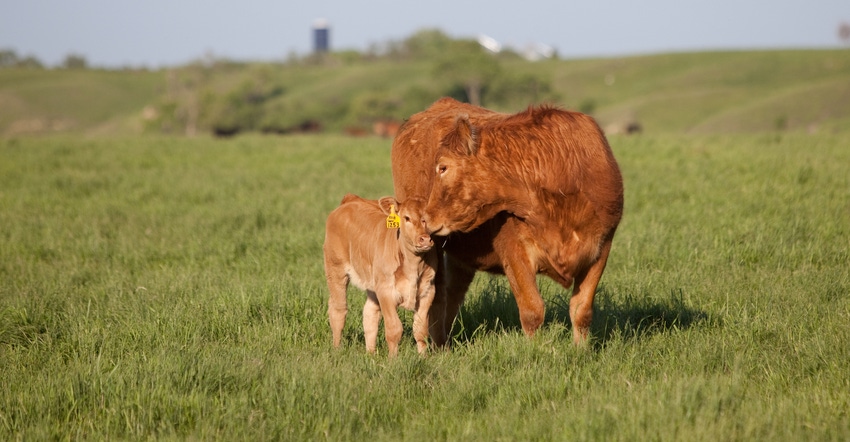Killed vs. modified-live virus vaccines, which is best for your operation?
September 1, 2017

Sponsored Content
Cow-calf producers, in partnership with their veterinarians, should consider the circumstances of their individual operations when choosing vaccines that will best help protect their herd from various diseases. Used in the right situations, both killed and modified-live virus (MLV) vaccines can offer effective disease management.
“There is a time and a place for both kinds of vaccines. Management and breeding season largely define your options,” says Dr. Jody Wade, professional services veterinarian, Boehringer Ingelheim. “Vaccine protocols should be established on a herd-by-herd basis, considering specific disease challenges, herd location and farm geography and management systems.”
Generally, Dr. Wade says producers like using killed vaccines because they’re safe for all ages and stages of cattle production. A killed vaccine contains the pathogen for the target disease, but no live virus. Once presented into a cow, the animal’s immune system will build antibodies to it. To obtain an adequate immune response from a killed vaccine, typically two shots of the same killed vaccine are required with annual boosters.
“If you have a cow herd where you do not have a specific breeding season and the bull is always with the cows, a killed vaccine may be the best option,” said Dr. Wade. “Since the vaccine is usually administered twice, 2-4 weeks apart, you need time and labor to manage the program effectively, as well as to provide the boosters every year.”
Other advantages include product safety, with no risk of the organism within the vaccine reverting to virulence and infecting the vaccinated animal. Killed vaccines are also safe for pregnant animals.
Conversely, a MLV vaccine contains a small amount of live virus altered to reduce the virulence of the disease-causing pathogen. The pathogen has to replicate and grow before the animal can build antibodies, and a return to virulence in MLV vaccines is extremely rare. Conditions have to be just right for an MLV vaccine to work effectively and care must be taken when handling them to protect the living organisms within the vaccines.
“A MLV vaccine is preferred when there is a set breeding season. Vaccines can be given during the cow herd’s open season 30 days prior to breeding, so MLV vaccine will generally last through gestation,” he said. “The one-shot advantage is especially convenient for cow-calf enterprises that may have limited access to animals at certain times of the year.”
MLV vaccines must be reconstituted and used within one hour, so that can be difficult to manage. In addition, Dr. Wade notes a small percentage of animals may not respond to a vaccine on a given day, so some veterinarians may recommend repeating the vaccine at a later date. A lower incidence of injection-site lesions also can be expected.
“Producers also should evaluate vaccines that offer the choice of multiple combinations to help protect against multiple disease challenges with fewer injections,” said Dr. Wade. “Always remember that the ideal time to vaccinate is prior to any expectation of a disease challenge and preferably not when animals are highly stressed.”
About Boehringer Ingelheim Animal Health
As the second largest animal health business in the world, Boehringer Ingelheim is committed to improving animal health. With more than 10,000 employees worldwide, Boehringer Ingelheim Animal Health has products available in more than 150 markets and a global presence in 99 countries. For more information about Boehringer Ingelheim Animal Health, click here.
Innovative medicines for people and animals have for more than 130 years been what the research-driven pharmaceutical company Boehringer Ingelheim stands for. Boehringer Ingelheim is one of the industry’s top 20 pharmaceutical companies and to this day remains family-owned. Day by day, some 50,000 employees create value through innovation for the three business areas human pharmaceuticals, animal health and biopharmaceutical contract manufacturing. In 2016, Boehringer Ingelheim achieved net sales of around 15.9 billion euros. With more than three billion euros, R&D expenditure corresponds to 19.6 per cent of net sales.
Social responsibility comes naturally to Boehringer Ingelheim. That is why the company is involved in social projects, such as the “Making More Health” initiative. Boehringer Ingelheim also actively promotes workforce diversity and benefits from its employees’ different experiences and skills. Furthermore, the focus is on environmental protection and sustainability in everything the company does.
More information about Boehringer Ingelheim can be found on www.boehringer-ingelheim.com or in our annual report.
About the Author(s)
You May Also Like



